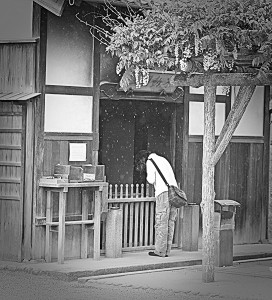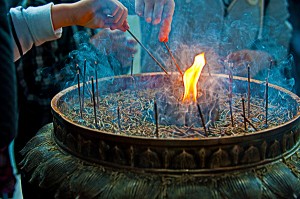
Recently I have used a very special book that I own as a subject for free conversation with some of my students at Smith’s School of English, Kawanishi スミス英会話 川西校. This book is called LIVING JAPAN and is by Donald Keene, a world renowned expert on Japan, its culture and literature. This book contains many chapters on the richness and diversity of life in Japan, and is illustrated with numerous beautiful and fascinating photographs. What I find most interesting about this book is that it is a first edition, published in 1959, fifty years ago. This was a time when Japan was recovering form a disastrous war, and long before it attained the level of prosperity that has recently been enjoyed. There is much evidence of poverty, but much more of an incredibly rich and deep tradition and culture. Even in difficult times people appeared to enjoy celebrating their festivals, their food, and a way of life that had evolved over many centuries.

My students very much enjoyed these lessons, and we had much to discuss. When asked for their opinions, all of them said that what has changed over the last 50 years are the superficial things in life, clothes, houses, material things, but that the deeper things, the spirit and culture of Japan live on, very little changed. This I notice very much as well: the celebration of traditional times of the year as times to enjoy and to be immersed in a deep and ancient way of life instead of merely an excuse for commercial exploitation as we see in many western countries. I see this in Koi Nobori flying over Shukugawa 夙川, at temples on a recent visit to Nara 奈良, in the stalls at Nishinomiya Shrine 西宮神社 when I went there over New Year. And very much, I learn more and more of these traditions from my students.

Isn’t Japan a wonderful place to live and teach (and learn) in.
John
Smith’s School of English, Kawanishi
スミス英会話 川西校
Yes, it is John. Japan is a mix of the old and the new. While we see many high-tech gadgets in Japan, we can still see tradional Japanese culture. For example, I always enjoy seeing Japanese women wear the traditional clothing “kimono” on special occasions such as weddings or Coming-of-Age Day, when women celebrate becoming adults. This mix of the old and new is interesting to me.
Derek
SSE Tsukaguchi